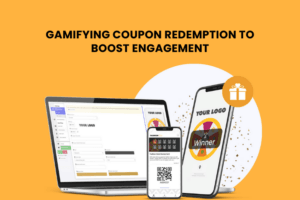
In today’s competitive business landscape, it is essential for businesses to understand their customers and create targeted marketing and engagement strategies that are tailored to their specific needs and preferences. This is where customer segmentation comes in.
Customer segmentation is the process of dividing customers into groups or segments based on shared characteristics, such as demographics, interests, behaviors, and preferences. This allows businesses to create targeted marketing and engagement strategies that are tailored to the specific needs and preferences of each customer segment.
However, creating effective customer segments is not always easy. One key factor is the use of customer data. Customer data is any information that businesses collect about their customers, such as demographics, interests, behaviors, and preferences. By using customer data to create their segments, businesses can create segments that are based on real customer behavior, rather than assumptions or stereotypes. This can help to ensure that their segments are accurate and actionable, which is essential for creating effective marketing and engagement strategies.
There are many sources of customer data that businesses can use to create their segments. For example, businesses can use customer surveys to collect information about customer demographics, interests, and preferences. They can also use website analytics to track customer behavior on their website, such as which pages they visit and which products they purchase. Social media data can also be a valuable source of customer data, as it can provide insights into customer interests and behaviors.
OptCulture is a powerful platform that can help businesses to use customer data to create accurate and actionable customer segments. With OptCulture, businesses can easily collect, manage, and analyze customer data, allowing them to create customer segments that are based on real customer behavior. They can also use OptCulture’s analytics and reporting tools to track and measure the effectiveness of their segments and make data-driven decisions.
In conclusion, using customer data is an essential step for businesses that want to create accurate and actionable customer segments. By collecting and analyzing customer data, businesses can create segments that are based on real customer behavior, allowing them to create targeted and effective marketing and engagement strategies. With OptCulture, businesses can easily use customer data to create accurate and actionable segments and drive better results.
Customer segmentation is the process of dividing customers into groups or segments based on shared characteristics, such as demographics, interests, behaviors, and preferences. This allows businesses to create targeted marketing and engagement strategies that are tailored to the specific needs and preferences of each customer segment.
However, creating effective customer segments is not always easy. One key factor is the use of customer data. Customer data is any information that businesses collect about their customers, such as demographics, interests, behaviors, and preferences. By using customer data to create their segments, businesses can create segments that are based on real customer behavior, rather than assumptions or stereotypes. This can help to ensure that their segments are accurate and actionable, which is essential for creating effective marketing and engagement strategies.
There are many sources of customer data that businesses can use to create their segments. For example, businesses can use customer surveys to collect information about customer demographics, interests, and preferences. They can also use website analytics to track customer behavior on their website, such as which pages they visit and which products they purchase. Social media data can also be a valuable source of customer data, as it can provide insights into customer interests and behaviors.
OptCulture is a powerful platform that can help businesses to use customer data to create accurate and actionable customer segments. With OptCulture, businesses can easily collect, manage, and analyze customer data, allowing them to create customer segments that are based on real customer behavior. They can also use OptCulture’s analytics and reporting tools to track and measure the effectiveness of their segments and make data-driven decisions.
In conclusion, using customer data is an essential step for businesses that want to create accurate and actionable customer segments. By collecting and analyzing customer data, businesses can create segments that are based on real customer behavior, allowing them to create targeted and effective marketing and engagement strategies. With OptCulture, businesses can easily use customer data to create accurate and actionable segments and drive better results.
Latest Posts
How to Create a Successful Gift Card Rewards Program for Customer Retention
October 17, 2024
How to Create a Successful Gift Card Rewards Program for...
The Importance of Loyalty Benefits: How Discounts and Promo Codes Drive Customer Retention
October 16, 2024
The Importance of Loyalty Benefits: How Discounts and Promo Codes...
Gamifying Coupon Redemption to Boost Engagement
October 16, 2024
Gamifying Coupon Redemption to Boost Engagement In today's crowded...
Reducing Customer Churn with Retargeting Promo Codes
October 16, 2024
Reducing Customer Churn with Retargeting Promo Codes In retail,...
How Coupons and Promo Codes Can Transform Retailers’ Business
October 16, 2024
How Coupons and Promo Codes Can Transform Retailers' Business ...




